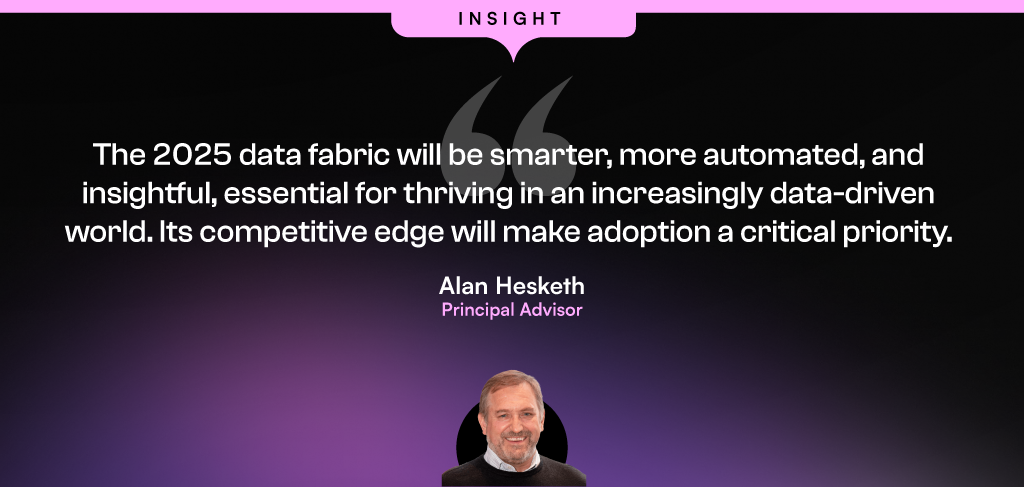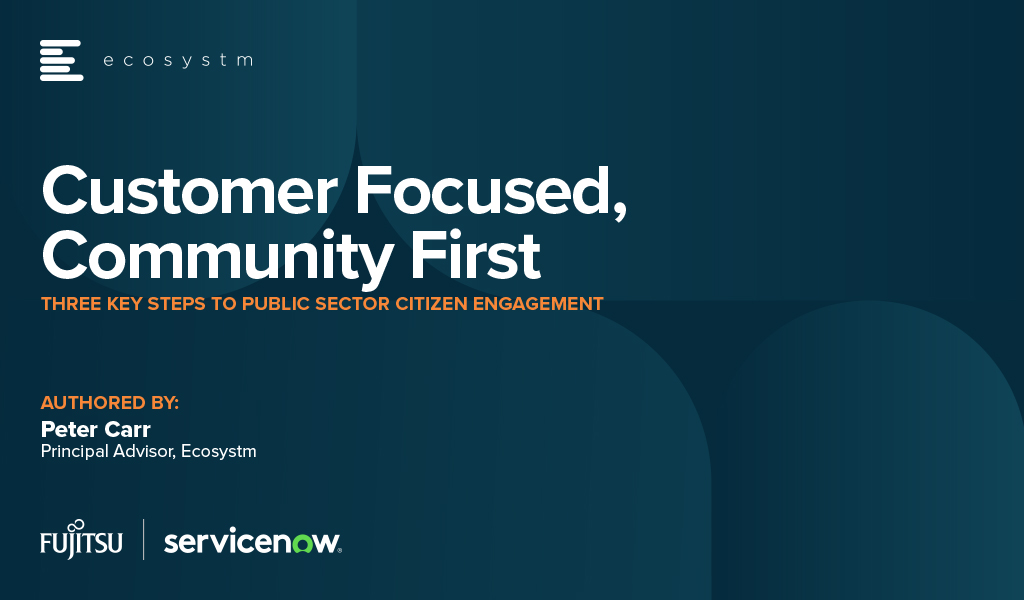
2024 was a year marked by intense AI-driven innovation. While the hype surrounding AI may have reached a fever pitch, the technology’s transformative potential is undeniable.
The growing interest in AI can be attributed to several factors: the democratisation of AI, with tools and platforms now accessible to businesses of all sizes; AI’s appeal to business leaders, offering actionable insights and process automation; and aggressive marketing by major tech companies, which has amplified the excitement and hype surrounding AI.
2025 will be a year defined by AI, with its transformative impact rippling across industries. However, other geopolitical and social factors will also significantly shape the tech landscape.
Ecosystm analysts Achim Granzen, Alan Hesketh, Audrey William, Clay Miller, Darian Bird, Manish Goenka, Richard Wilkins, Sash Mukherjee, Simona Dimovski, and Tim Sheedy present the key trends and disruptors shaping the tech market in 2025.
Click here to download ‘Key Tech Trends & Disruptors in 2025’ as a PDF
1. Quantum Computing Will Drive Major Transformation in the Tech Industry
Advancements in qubit technology, quantum error correction, and hybrid quantum-classical systems will accelerate breakthroughs in complex problem-solving and machine learning. Quantum communications will revolutionise data security with quantum key distribution, providing nearly unbreakable communication channels. As quantum encryption becomes more widespread, it will replace current cryptographic methods, protecting sensitive data from future quantum-enabled attacks.
With quantum computing threatening encryption standards like RSA and ECC, post-quantum encryption will be critical for data security.
While the full impact of quantum computers is expected within the next few years, 2025 will be pivotal in the transition toward quantum-resistant security measures and infrastructure.

2. Many Will Try, But Few Will Succeed as Platform Companies
Hypergrowth occurs when companies shift from selling products to becoming platform providers. Unlike traditional businesses, platforms don’t own inventory; their value lies in proprietary data and software that connect buyers, sellers, and consumers. Platforms disrupt industries and often outperform legacy businesses, with examples like Uber, Amazon, and Meta, and disruptors like Lemonade in insurance and Wise in international funds transfer.
In 2025, many companies will aim to become platform businesses, with AI seen as a key driver.
They will begin creating platforms and building ecosystems around them – some within existing brands, others launching new ones or even new subsidiaries to seize this opportunity.

3. A Trans-Atlantic Divide Will Emerge in AI Regulation
The EU is poised to continue its rigorous approach to AI regulation, emphasisng ethical considerations and robust governance. This is evident in the recent AI Act, which imposes stringent guidelines and penalties for violations. The EU’s commitment to responsible AI development is likely to lead to a more cautious and controlled innovation landscape.
In contrast, the US, under a new administration, may adopt a more lenient regulatory stance towards AI. This shift could accelerate innovation and foster a more permissive environment for AI development. However, it may also raise concerns about potential risks and unintended consequences.
This divergence in regulatory frameworks could create significant challenges for multinational companies operating in both regions.

4. The Rise of AI-Driven Ecosystem Platforms Will Shape Tech Investments
By 2025, AI-driven ecosystem platforms will dominate tech investments, fueled by technological convergence, market efficiency demands, and evolving regulations. These platforms will integrate AI, IoT, cloud, and data analytics to create seamless, predictive ecosystems that transcend traditional industry boundaries.
Key drivers include advancements in AI, global supply chain disruptions, and rising ESG expectations. Regulatory shifts, such as the EU’s AI Act, will further push for compliant, ethical platforms emphasising transparency and accountability.
For businesses, this shift redefines technology as interconnected ecosystems driving efficiency, innovation, and customer value.

5. AI-Powered Data Fabrics Will be the Foundation for Data-Driven Success
In 2025, AI-powered data fabrics will become a core technology for large organisations.
They will transition from basic data management tools to intelligent systems that deliver value across the entire data lifecycle. Organisations will finally be able to get control of their data governance.
AI’s enhanced role will automate essential data functions, including intelligent data integration and autonomous connection to diverse data sources. AI will also enable proactive data quality management, predicting and preventing errors for improved reliability. AI-driven data fabrics will also offer automated data discovery and mapping, dynamic data quality and governance, intelligent data integration, and enhanced data access and delivery.

6. Focus Will Shift From AI Models to Intelligence Gaps & Performance
While many organisations are investing in AI, only those that started their transformation in 2024 are truly AI-led. Most have become AI-driven through embedded AI in enterprise systems as tech providers continue to evolve their offerings. However, these multi-vendor environments often lack synergy, creating gaps and blind spots.
In 2025, organisations will pause their investments to assess AI capabilities and identify these gaps.
Once they pinpoint the blind spots, investments will refocus not on new AI models, but on areas like model orchestration to manage workflows and ensure peak performance; vendor management to establish unified governance frameworks for flexibility and compliance; and eventually automated AI lifecycle management, with centralised inventories and monitoring to track performance and detect issues like model drift.

7. Specialised Small Language Models Will Gain Traction
GenAI, driven by LLMs, has dominated the spotlight, fueling both excitement and concerns about AI. However, LLM-based GenAI is entering a phase of diminishing returns, both in terms of individual model capabilities and the number of available models. Only a few providers will have the resources to develop LLMs, focusing on a limited number of models.
This will see the increased popularity of small language models (SLMs), that are tailored for a specific purpose, use case, or environment. These models will be developed by startups, organisations, and enterprises with deep domain knowledge and data. They will be fully commercialised driving narrow but distinct ROI.
There will be an increased demand for GPU-as-a-service and SLM-as-a-service, and the platforms which can support these.

8. Multi-agent AI Systems Will Help Manage Complexity and Collaboration
Isolated AI tools that can perform narrow tasks lack the adaptability and coordination required for real-time decision-making. Multi-agent systems, in contrast, consist of decentralised agents that collaborate, share information, and make independent decisions while working toward a common goal. This approach not only improves efficiency but also enhances resilience in rapidly changing conditions.
Early use cases will be in complex environments that require cooperation between multiple stakeholders.
Multi-agent systems will optimise logistics by continuously analysing disruptions and dynamically balancing supply and demand in energy grids. These multi-agent systems will also operate in competitive modes, such as algorithmic trading, ad auctions, and ecommerce recommender systems.

9. Super Apps Will Expand into Rural & Underserved Markets in Asia Pacific
Super apps are set to reshape rural economies, fueled by increased internet access, affordable tech, and heavy government investment in digital infrastructure. Their localised, all-in-one services unlock untapped potential in underserved regions, fostering inclusivity and innovation.
By 2025, super apps will deepen their reach across Asia, integrating communication, payments, and logistics into seamless platforms.
Leveraging affordable mobile devices, cloud-native technologies, and localised services, they will penetrate rural and underserved areas with tailored solutions like agricultural marketplaces, local logistics, and expanded government services. Enterprises investing in agile cloud infrastructure will drive this evolution, bridging the digital divide, boosting economic growth, and enhancing user experiences for millions.

10. Intense Debates Over Remote vs. In-Office Work Will Persist in Asia Pacific
Employers in Asia Pacific will enforce stricter return-to-office policies, linking them to performance metrics and benefits to justify investments in physical spaces and enhance workforce productivity.
However, remote collaboration will remain integral, even for in-office teams.
The push for human-centred tech will grow, focusing on employee well-being and flexibility through AI-powered tools and hybrid platforms. Companies will prioritise enhancing employee experiences with personalised, adaptable workspaces, while office designs will increasingly incorporate biophilic elements, blending nature and technology to support seamless collaboration and remote integration.






















